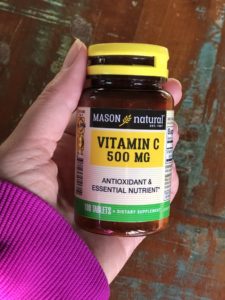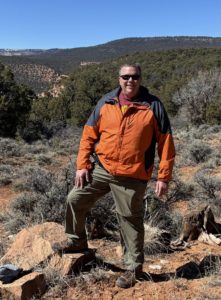I-70 Colorado: What it’s really like driving I-70 from Denver to Grand Junction CO
Whether you are an experienced driver or not, driving the I-70 Colorado stretch over the Rocky Mountains has some additional considerations to be aware of and plan for. I want to share some of my experiences with you so you will be more prepared than we were that first time. I must say, following advice from the locals regarding driving I-70 Colorado is extremely important. It’s a stunning drive but it has its ups and downs too, pun intended! I want you to be safe, proactive, and enjoy the drive.
I post short videos and announce new website posts on my Facebook page called Live Your Vacation in Grand Junction.
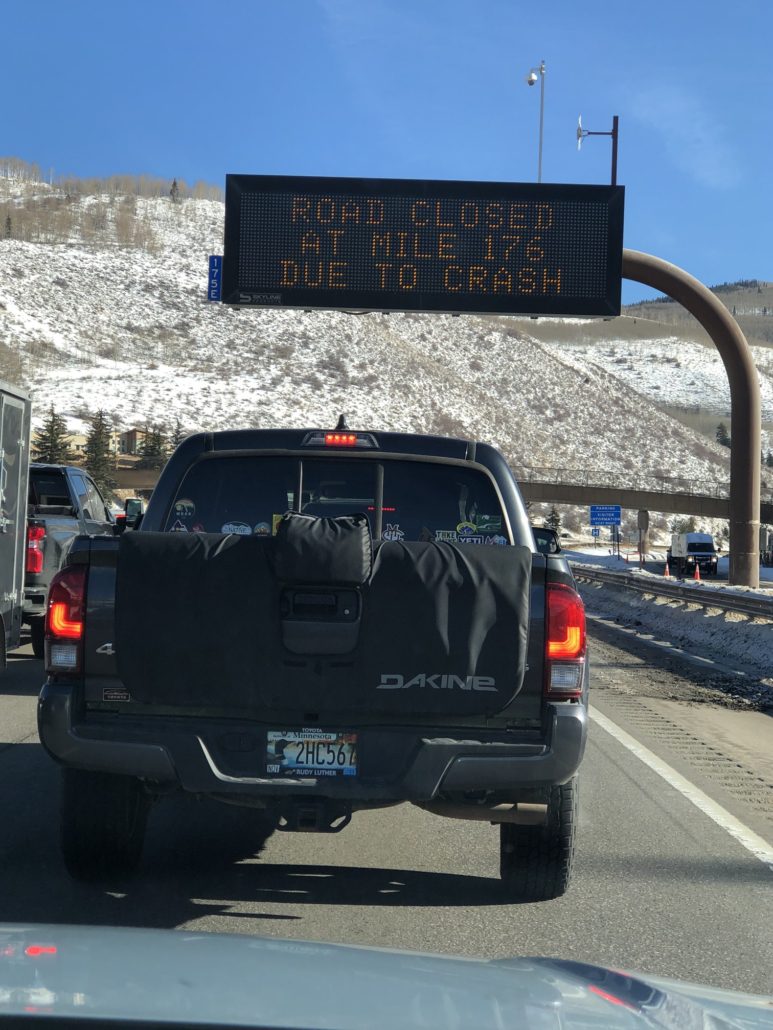
The “crash” indicated on the digital sign was actually snow on the interstate caused by the avalanche near Vail Pass. That’s our Toyota Tacoma we are following!
#1 I-70 Colorado isn’t always open to traffic in one or both directions
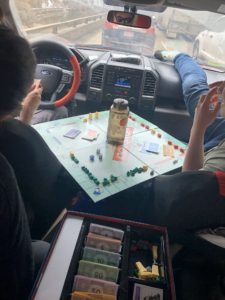
Unexpected boulder crashed into a semi truck on I-70 means it’s time for a game of Monopoly!
The main thing to know is that I-70 is unpredictable. I have been detoured multiple times over the years and that can add hours to your commute. You can’t simply exit the interstate, drive along a frontage road, then hop back on at the next exit. It is nothing like driving interstates around the country. I-70 is unique.
I have had to detour because of
- The 2020 Grizzly Creek forest fire near Glenwood Springs that burned over 32,000 acres resulting in a 13-day closure of the interstate.
- The July 2021 mudslide in Glenwood Canyon the following spring due to the forest fire. That closed I-70 for about two weeks. The detour was Grand Junction to Steamboat Springs then to Denver, yikes!
- And in December 2022 there was an avalanche near Vail that was triggered by a backcountry skier. Luckily this time we detoured around Vail pass via Leadville, but it added several hours to our drive. It closed several more times for avalanche mitigation that season.
- The summer of 2024 & 2025 we avoided the westbound Idaho Springs stretch several times due to construction. Backups can go on for miles and miles, especially when it’s down to one lane and the lead vehicle is a slow semi-truck… going uphill! Yeah, we saw that while driving east and said there’s no way we want to get stuck in that!
I had friends stuck in their vehicle on I-70 because a boulder crashed into a semi-truck, unable to exit, and they played a full game of monopoly during the wait. Car fires happen more frequently than where we used to live and so the interstate gets shut down for those too. And then there are vehicle accidents that shut it down as well. You can also imagine the role weather plays, but especially during the winter months. In winter you need 4-wheel drive or chains for your car in order to go over the passes on I-70. That’s the law.
Advice for driving I-70 through Colorado
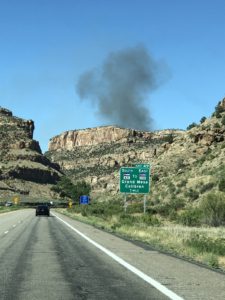
Smoke from a car fire while driving I-70 from Grand Junction to see a client on the Grand Mesa.
Be proactive when you make plans. Do not rely on it being open. If you want to fly into Denver and drive to Grand Junction CO, check the news and Google maps first. And if you are driving from Grand Junction to catch a flight out of the Denver airport, drive to Denver the night before your flight, not the day of. Give yourself a buffer in case there is a delay.
Download the Colorado Road Conditions app called CO Traveler. This app will help you with traffic expectations and there is a layer you can apply to the app for weather conditions. You can see if the roads are dry, wet, icy or snow covered.
Cell service is spotty. Keep track of your progress as you drive and update the travel app or Google maps. You most likely will lose cell service in the Glenwood Canyon as you stare up at the 100’ walls that surround you.
Know how to downshift your vehicle. If you are renting a car in Denver, DO NOT leave the rental car parking lot until you know how to downshift the vehicle you rented. Look up downshifting videos on YouTube prior to your trip if you have never driven on roads with 5-10% grades. You do NOT want to rely on your car brakes as they can get too hot and fail.
Leave with a full tank of gas or a full charge on your electric vehicle. If you get stuck on the interstate and cannot exit, you may use a lot of gas/range to idle your vehicle if you need the AC or heater. And if it’s wet, make sure you have plenty of windshield washer fluid too.
How to make the I-70 drive through Colorado more comfortable
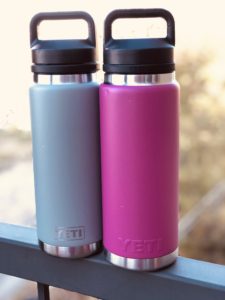
Our YETI Stainless Steel Reusable Water Bottles are also dishwasher safe. We haven’t added the stickers to them like most people LOL.
Drink plenty of water. Being at a higher elevation can take a toll on your body. Especially if you fly to the Denver airport and are driving to Grand Junction all in the same day. You get dehydrated faster at higher elevations even if you are not exerting yourself. Drink water or choose something with electrolytes like Gatorade, Propel, or purchase electrolyte powders to add to your drinks. Avoid tea, coffee and pop. Or, if you drink those, offset it with an equal or greater amount of water.
Invest in a good stainless-steel water bottle you can refill frequently. People in Colorado carry their water bottles everywhere. Good hydration is important and having your own bottle makes it very easy and keeps plastic bottles out of the environment. Read my post called Water Bottles 101.
We found that taking Vitamin C can be helpful to avoid altitude sickness. Start to take a Vitamin C supplement a day or two before your trip to Colorado. Check with your physician first, and your pediatrician for your children, on how to feel comfortable in higher elevations. Read my post called How to Avoid Altitude Sickness for more advice.
Take your time. Stop frequently at the numerous rest stops along the way. Get out and walk around. You’ll probably need to use the bathroom anyway, so plan on extra stops. Rest stops are typically a great source of materials about the area and fun local and historic information to look at.
Bring snacks. Whenever you are driving for over 2 hours, always pack snacks. Bring something salty to help your body absorb the extra water you are drinking. Nuts and trail mix make a good snack.
You might want a small cooler for your drinks and any chocolate you bring because it may melt in the car and that would be horrible. The sun is HOT here because we are closer to it. Read my post about Grand Junction Weather.
Take turns if you are driving with others. Allow the primary driver a chance to rest and look at the scenery too. Switch off driving every couple of hours.
What it’s really like to drive I-70 through Colorado
As you head West from Denver to Grand Junction, you leave the city and the interstate turns into a very long, slow climb that will be difficult on your vehicle. Your car or truck may need to use all the energy it has to climb this part of the Rocky Mountains. When I drove our Toyota Rav4, towing an 8-foot U-Haul, I had it floored and our max speed was 40 miles per hour, no joke! When you see it start to incline, make sure you are driving at least the speed limit because it’s difficult to speed up once you start uphill. Now, if you have an 8-cylinder truck, you probably won’t have issues, but you will be burning through a lot of gas too!
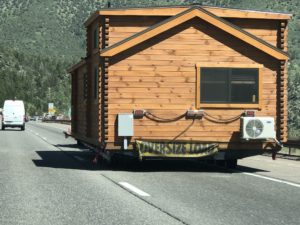
We had to follow this wide load for miles before there was enough of a shoulder for his oversized load and we could pass.
Absolutely stay in the right lane unless you are passing. It is the law in Colorado. Pay attention to the trucks as they go abnormally slow up the steep inclines. Vehicles driving slower than the speed limit generally have their hazard lights on full time. Be patient as you will get stuck behind a slow-moving truck or car at some point and the traffic in the left lane will be speeding by. It’s difficult to pass sometimes, so just wait until you have plenty of space. Try not to pass on an incline.
The Eisenhower/Johnson Tunnel is at the Continental Divide, the “top” of the Rocky Mountains at an elevation of 11,112 feet above sea level. BE PREPARED as you start to exit the tunnel. It’s like the green starting flag was just waived at the Indy 500 as everyone drives like a bat out of hell, downhill, jockeying for position. The actions of the more experienced I-70 drivers can be just as intimidating as the steep downgrade. Once you reach Silverthorne/Dillon, I recommend exiting at this time so you can pry your hands with white knuckles off the steering wheel and take a break until your heart rate returns to normal. You need to be very attentive at all times, making it strenuous. Don’t let those runaway truck ramps intimidate you, but understand they are there for a reason, and yes, they do get used!
Update: In July 2025 we were driving back to Grand Junction from Michigan. It was somewhat cloudy when we entered the tunnel on the Denver side. But when we came out the west side, it was pouring rain! Water was pooling on the highway, a lot of water. I flung on my windshield wipers and slowed down so we wouldn’t hydroplane across the interstate. That was unexpected! By the time we got to Glenwood Springs it was very dark. I don’t recommend driving it after dark. We were so tense from constantly looking for deer. And you don’t get to see the impressive scenery.
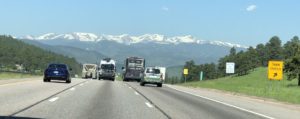
We chuckled the first time we saw the “chain up” signs and the pull-offs for the truckers.
There’s another high pass around Vail. So, when you descend after Denver, that’s not the end. You will go up and over Vail pass and it can get a bit chaotic then too with other people speeding in the left lane, making it hard to pass and drive at a good pace for you. Always be watching the traffic around you. Cars come up behind you, out of nowhere, and vehicles you’re following suddenly move into the passing lane leaving you unknowingly racing up on a slow-moving semi.
It gets easier after Vail. Near the town of Eagle, the mountains open up and there feels like more room. Then you approach Glenwood Canyon, the most expensive stretch of interstate ever constructed in the United States. You’ll enjoy going down and following the Colorado River as you look up at the canyon walls. Very pretty. Watch your speed through the canyon as there are sharp turns where you need to slow down quickly.

Driving near Glenwood Springs CO along the Colorado River
After all the ups and downs, curves and beautiful scenery, you come around this curve right before Palisade and it will begin to open up into the Grand Valley. You’ll see vineyards and peach orchards along I-70, yes, those famous Palisade Peaches (so juicy)! The Book Cliff mountain range will be on your right, they go all the way into Utah.
As you enter Palisade, you will get a better view of the world’s largest flattop mountain, the Grand Mesa. And to the southwest you will see the Colorado National Monument off in the distance. Grand Junction is surrounded by beautiful mountains with the city at 4,600+ feet above sea level.
Once you come out of the De Beque Canyon you are just 15 minutes to Grand Junction. There are a couple of exits to take. Horizon Drive is the most popular exit, check out the cool rotary with some metal wild horse sculptures in the middle. It’s right near the Grand Junction airport (small airport with 6 gates, but hardly ever busy!) Read about my GJT airport experience.
Once you complete your drive, keep drinking water. If you can, abstain from alcohol on your first night in town. Give yourself a chance to adjust to the higher altitude. If you get a headache, drink more water. And once you get out and explore the area, always wear sunscreen as you can burn your skin within 15 minutes when you come in the summer months.
Hopefully you find this information useful. Driving I-70 through the Rocky Mountains of Colorado is an experience you will never forget. Be safe. Plan ahead. Be prepared. Be patient. Be flexible. Have your passengers take lots of photos to show your friends!
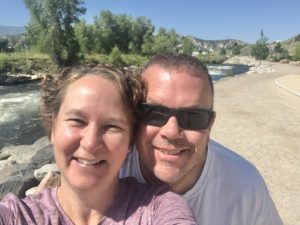
Beautiful Rest Stop in Eagle on I-70
Text/Call 612-306-9558 me with any questions you have about driving I-70 from Denver to Grand Junction CO or the Grand Valley in general.
Follow me on Facebook: Live Your Vacation in Grand Junction
PAUL ASPELIN, REALTOR®
GRI, SRES®, CNE
Grand Junction Real Estate Expert
Connect with me on LinkedIn or send me an email.
Learn more about my experience and how I serve my clients
© 2024 Paul Aspelin, REALTOR®. MovetoGrandJunction.com Copyright protected. All rights reserved.


